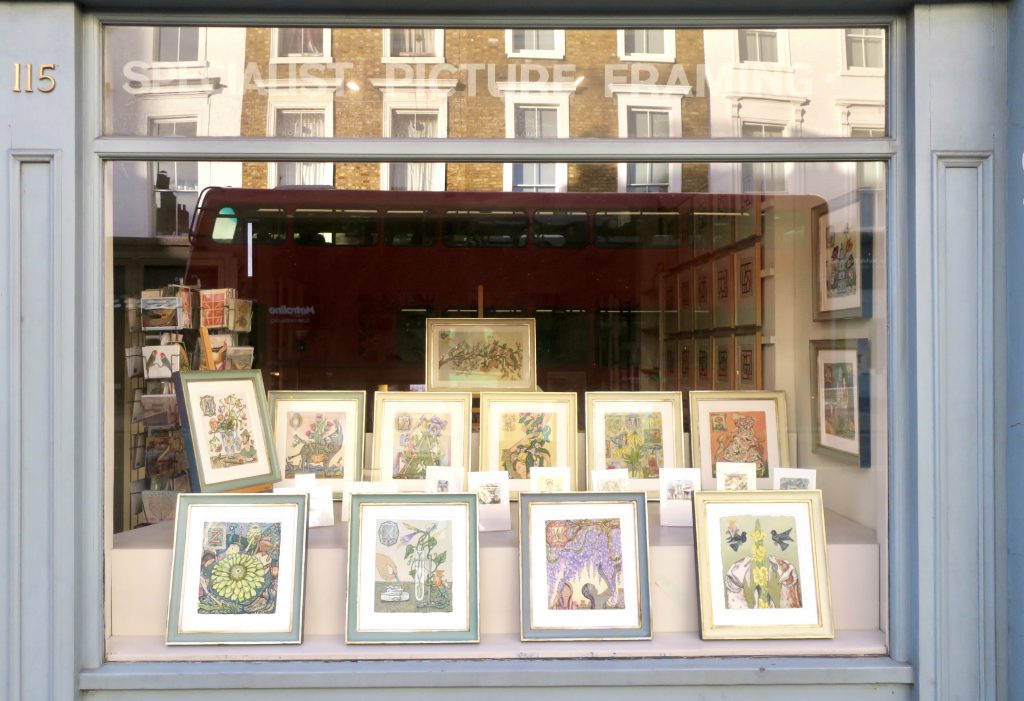
Hollington’s Florilegium, paintings by David Hollington, a botanical alphabet, part 2: N to Z, in the window of the Rowley Gallery through January and February. They are accompanied by a selection of David’s miniature paintings, and a few words of introduction here below.
The second half of my alphabet series for Rowley Gallery, combined with the first in 2021 (see earlier blogpost here), under the book’s title Hollington’s Florilegium began to take shape in January 2022.
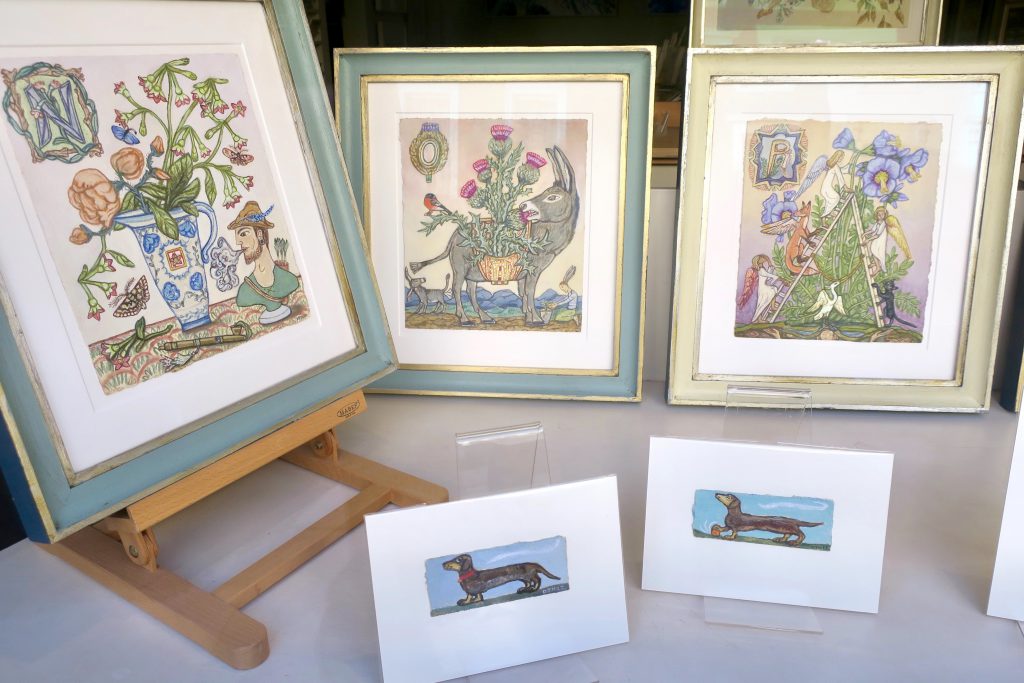
In May 2022 the series of works, along with the accompanying text by garden writer Clark Lawrence, was optioned by an Italian publisher. The book will be published in March 2023 in English and Italian by LDN, Libreria della Natura Edizioni in Milan.
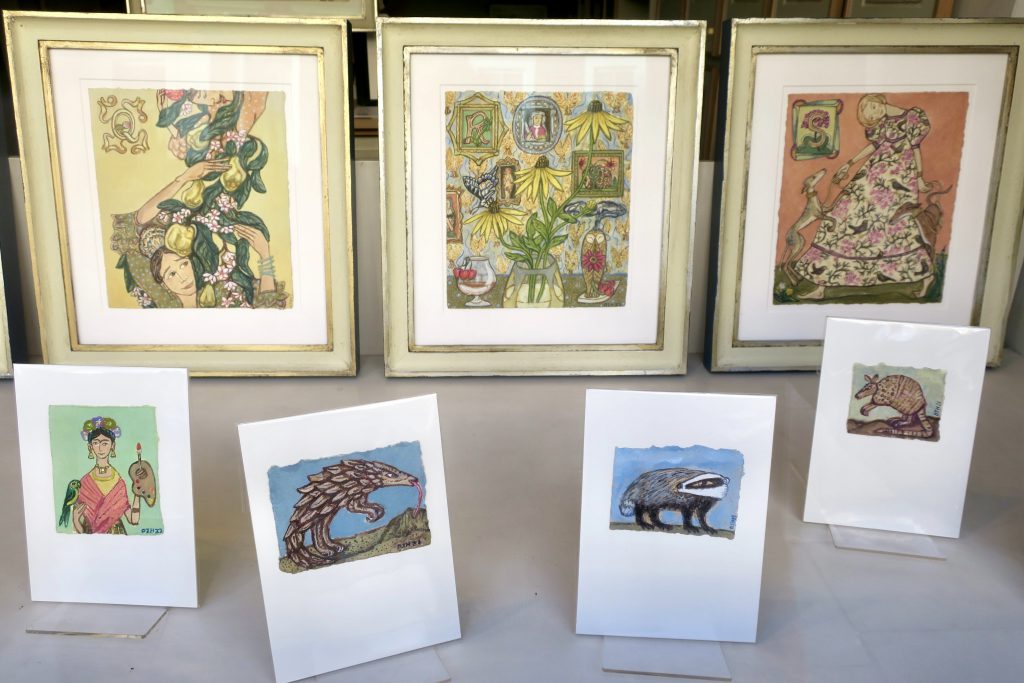
Now the the project is complete it’s a chance to look back and appreciate how fortunate I have been to be able to have shaped the concept for myself.
Choosing our favourite plants and being able to express them in our authentic voices is deeply rewarding.
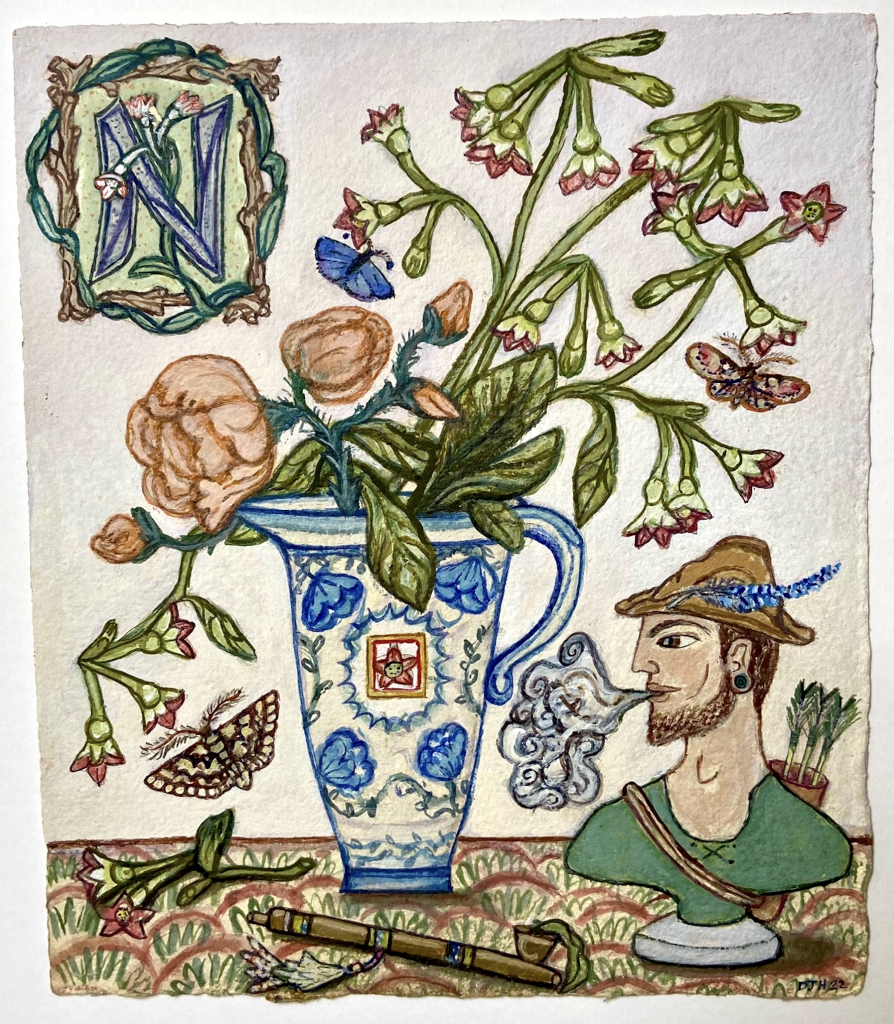
N is for Nicotiana Tinkerbell
Both Clark and I felt it was important to have a connection to each subject of the alphabet if possible, to have grown or tried to grow them in our gardens. That emotional connection to rearing a plant from seed and nurturing until it is flowering and thriving engenders an intimate knowledge of the subject.
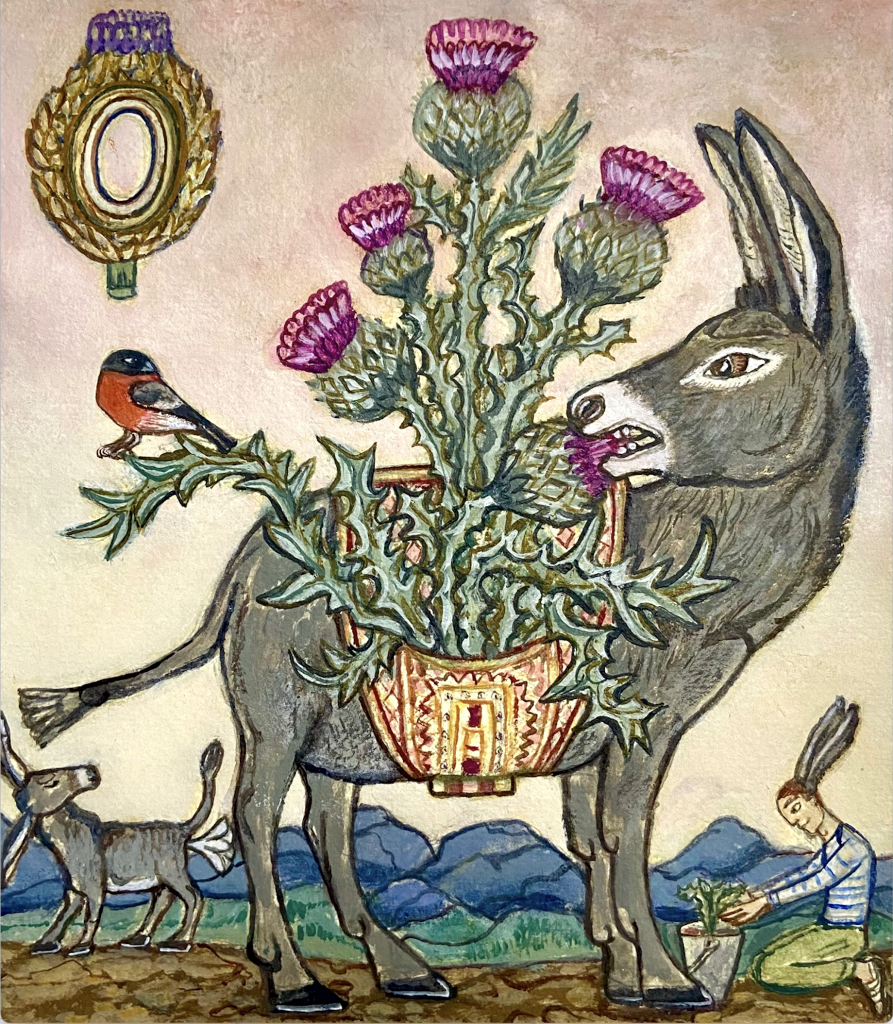
O is for Onopordum acanthium
Many times we have both tried and failed to grow plants we have longed for, in my case Lobelia Tupa has been sown over countless years without success, surprisingly germinating last year, three or four happy bulky looking specimens are sat out in the the cold frosty soil as I write, tantalisingly promising stunning and strange flower spikes in the summer.
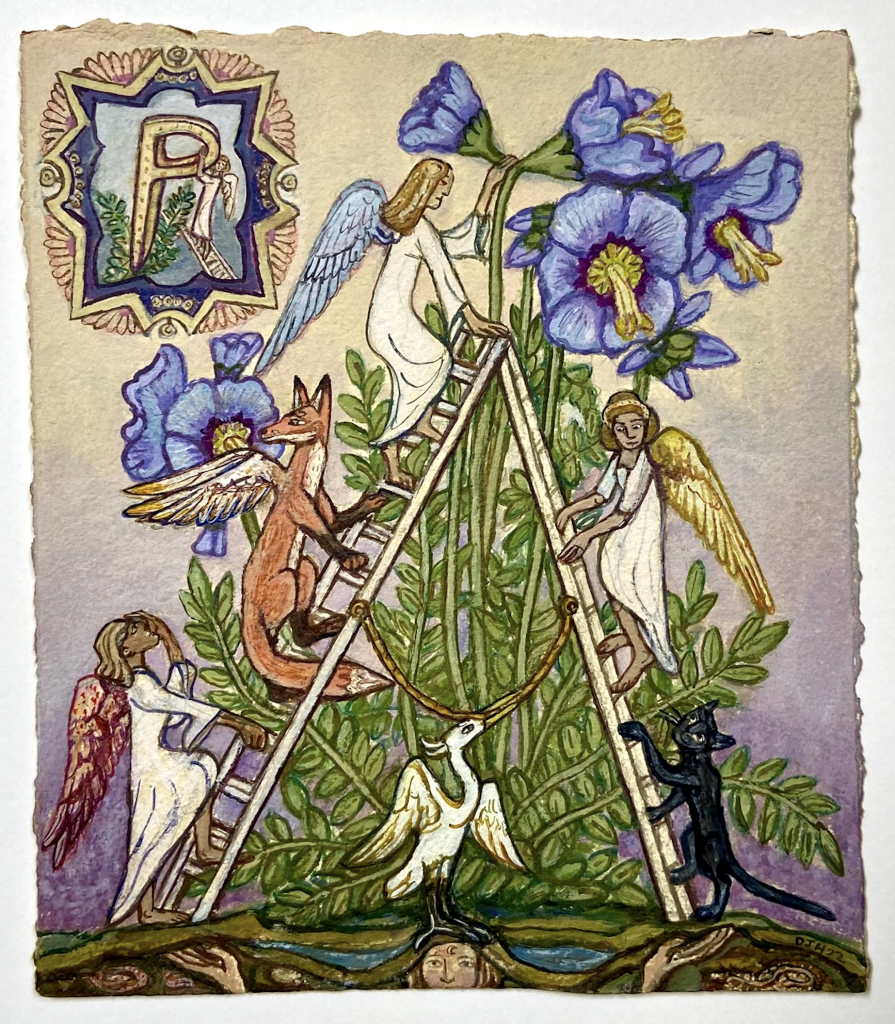
P is for Polemonium
The approach to all my work, this series included, is a weaving together of thoughts, memories, tales, myths, songs, beasts and birds. Objects and sometimes people I know and find beguiling and beautiful appear in the narratives.
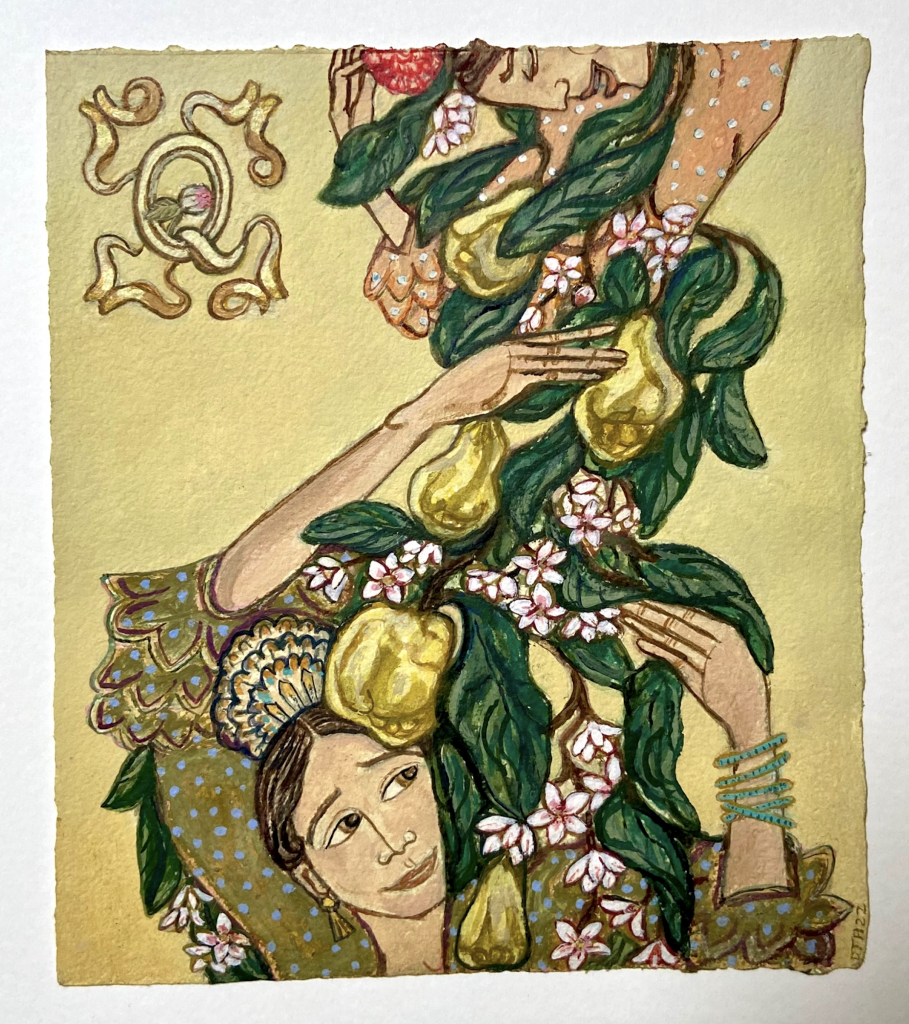
Q is for Quince Tree
Most importantly the glory and fragility of the natural world is central, it is the beginning and the end to what keeps me inspired and awake.
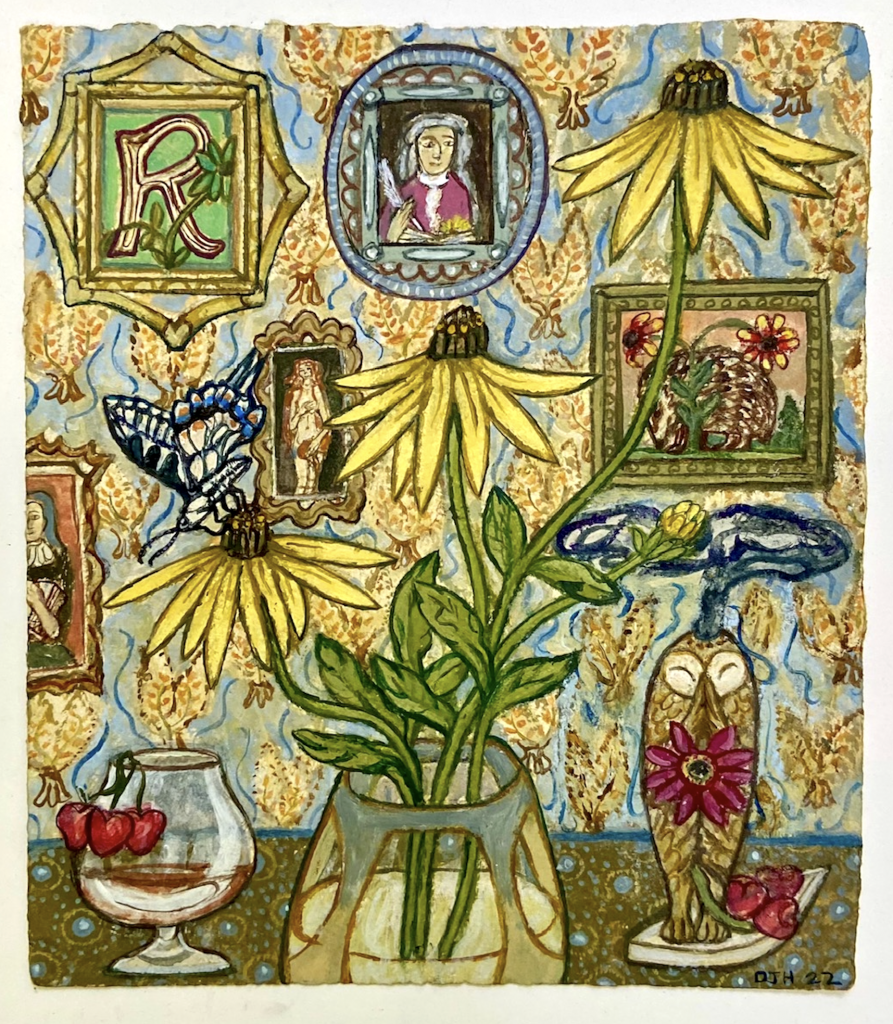
R is for Rudbeckia
Thank you Rowley Gallery for working with me on this consuming and fruitful dream project.
※
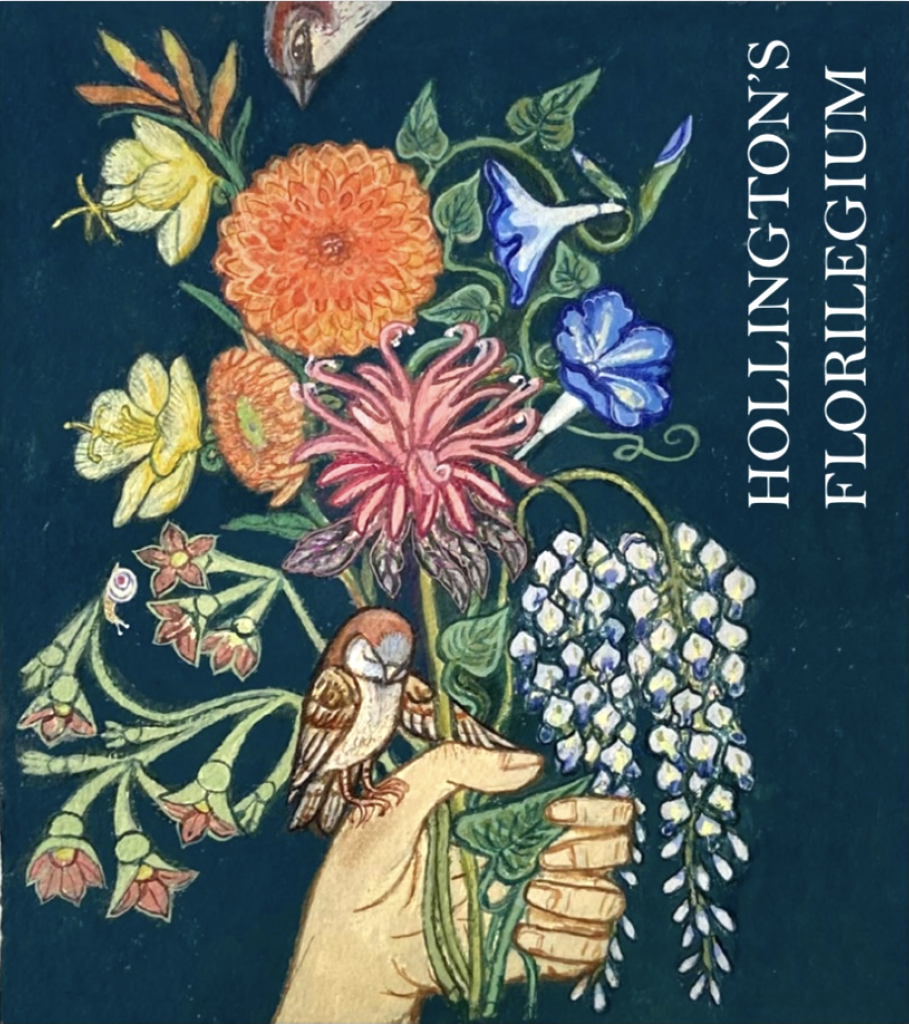
“You can judge this book by its cover. It was painted to reveal the book’s essence. Florilegium is made up of two Latin words, flower (flos) and the verb “to gather” (legere), and this book is true to the word’s literal meaning. It is Hollington’s unique bouquet.”
※
About Hollington’s Florilegium
David Hollington first spoke to me about this A to Z book of plants in the last months of 2020, during what seemed like an endless period of COVID deaths, confusion and closures. I was feeling down, in a creative and economic slump, and his invitation to write plant descriptions to accompany his paintings was a welcome distraction from the outside world.
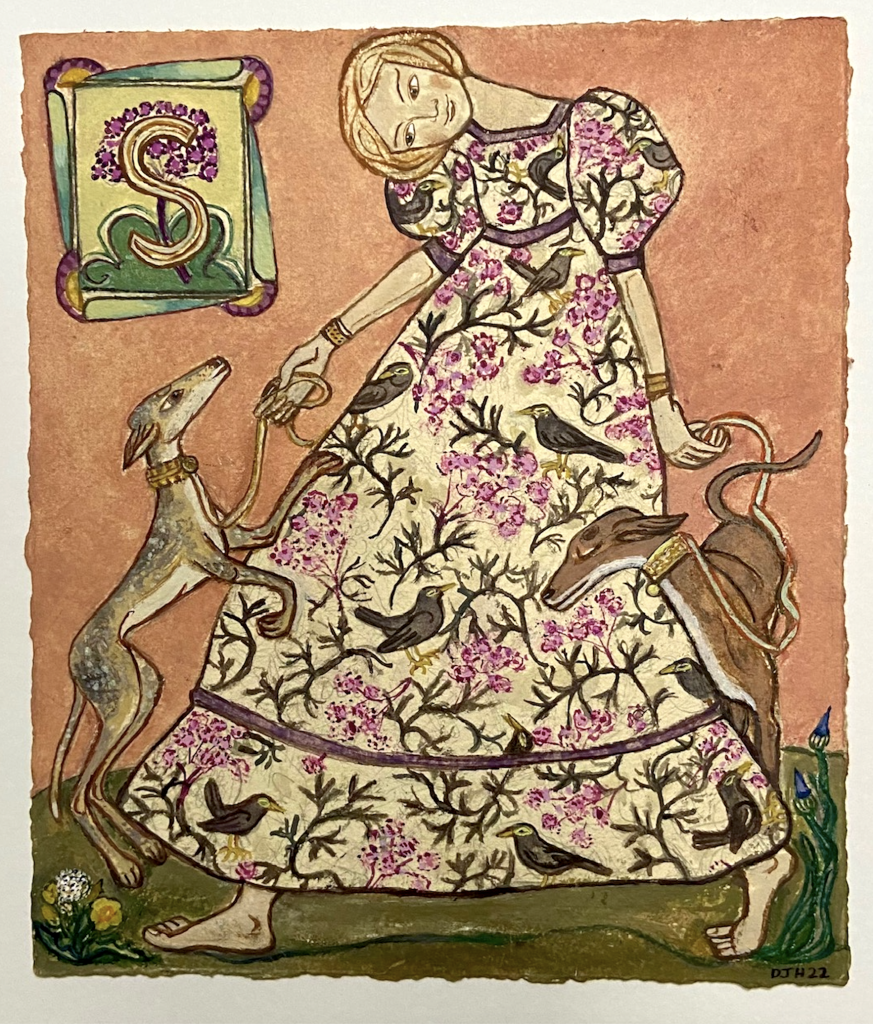
S is for Sambucus nigra
Working on this book has brightened many days of darkness. Encouraged by the enthusiasm of his friends at Rowley Gallery in London, who agreed to show the original works on two separate occasions, we began the project out of our unrestrained love of nature and plants, without even knowing if it would one day find a publisher, and then along came Valentina Romano and Gian Cristoforo Bozano of Libreria Della Natura, who gave our work a chance to take form.
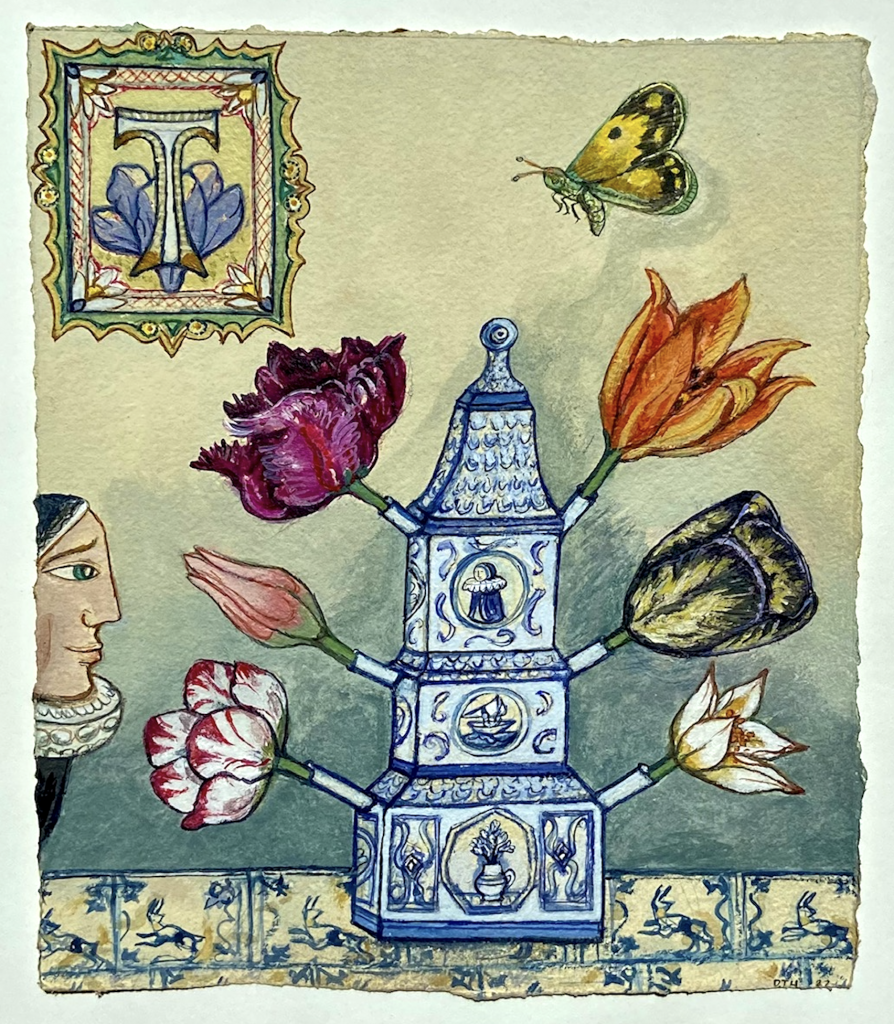
T is for Tulipa
How did Hollington and I pick only one plant for each letter? This book is, for the most part, about plants that we know personally, ones that either he has grown in his backyard London garden or I have cultivated here in Borgo Virgilio, near Mantua. Many flowers we love were excluded from the book because they too closely resembled another that had already been chosen. I have a soft spot for old-fashioned plants; sunflowers, zinnias, French marigolds, cornflowers, dahlias and daisies, but I admit that the happy circular faces of the Asteraceae family could have become monotonous after a while. A few made it in, anyway, as you will see.
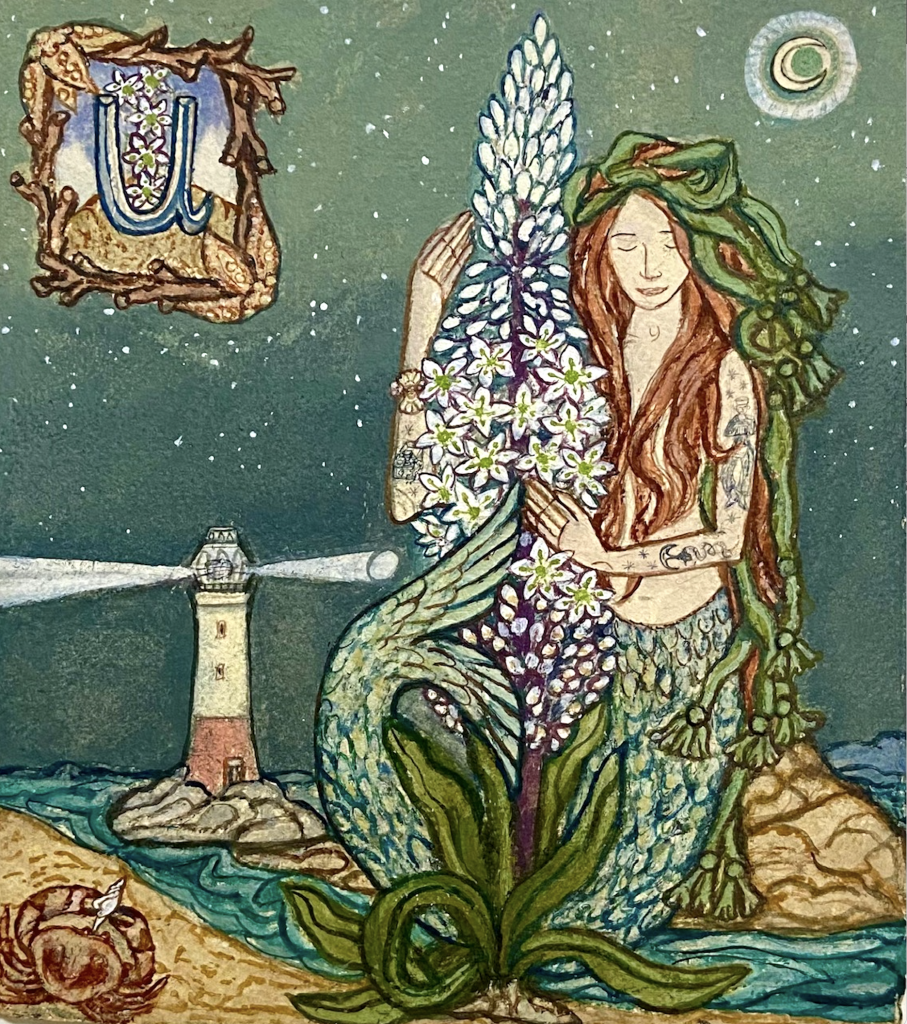
U is for Urginea maritima
It might have been during our first phone call about the book that Hollington shared his ideas for each letter, starting with choices he knew I would fully approve of, such as Aquilegia, Borago, Cerinthe, Dahlia…
Then David asked “Can you guess what E might be?”
Echinops! I guessed excitedly, as globe thistle has been so good to me over the years.
No, he responded, after a slight pause.
Echinacea! Who wouldn’t like a painting of a cone flower or a page about that?
No…
Epimedium! I can just imagine how much fun you will have painting those lopsided leaves and tiny flowers in a shady woodland…
No…
Erigeron? We could do karvinskianus, but also the roadside weed, Erigeron annuus…
No…
Equisetum hyemale? Flowerless green sticks! Nobody would expect that.
No…
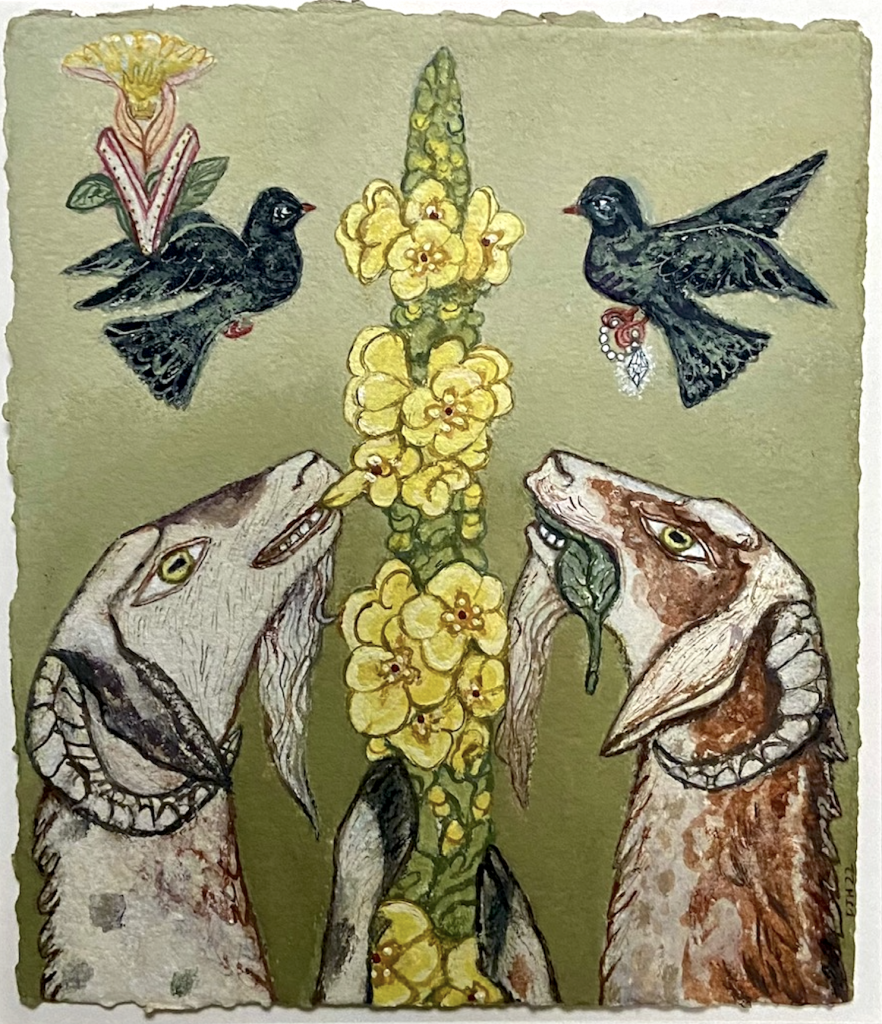
V is for Verbascum thapsus
And so it was, with so many letters. We spent hours reminiscing about plants that we thought we knew, followed by many more hours of reading and writing about them, painting them, getting to know them better.
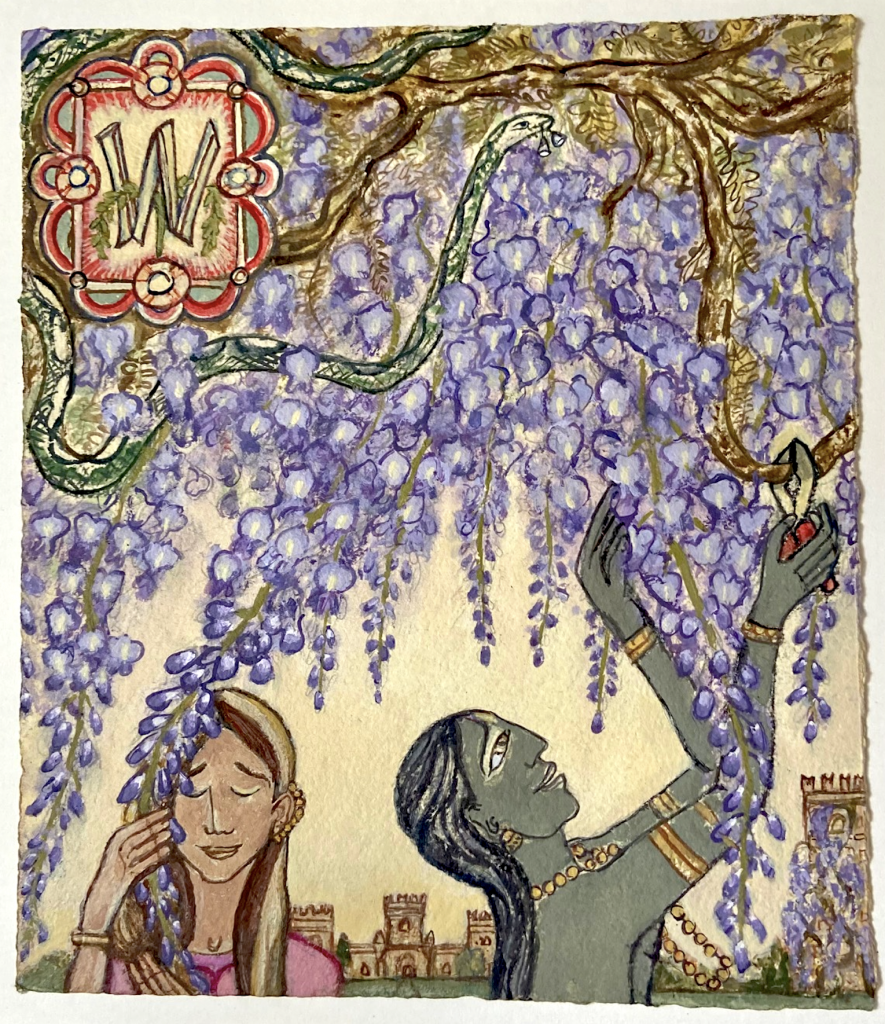
W is for Wisteria
Hollington did most of the work. I sometimes felt guilty for how quickly I would do some research and spin out a page of text, while David dedicated several days or even weeks to one painting. This is Hollington’s Florilegium because the idea was his. He made the rules and then together we broke them whenever we found it amusing. It must be obvious, even to someone like me who does not paint, that he has poured his heart and soul into these works, but also had fun.
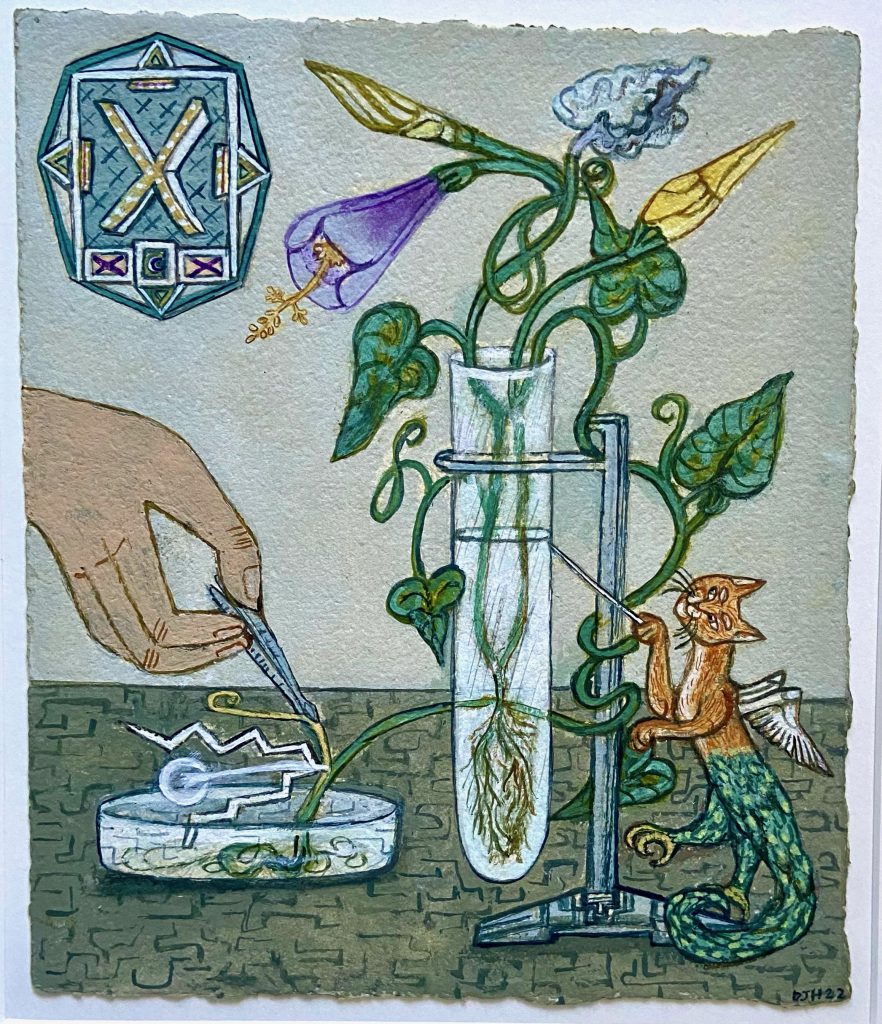
X is for Cross/Hybrid
While not meaning to exclude anyone, this book was, from its inception, aimed to entertain ourselves and other like-minded plant aficionados. It is for the curious, language-loving horticulturist or gardener more than the no-time-to-waste garden designer. There’s very little “how to” information here, but you will learn at least several good words of Greek and Latin.
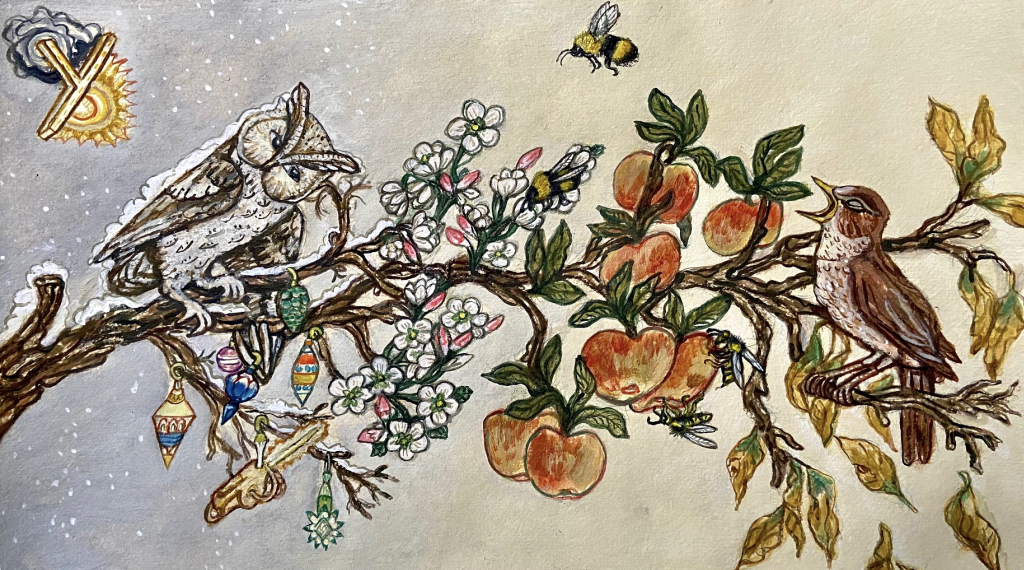
Y is for Year
Hollington’s Florilegium is, without meaning to be self-centered or self-satisfied, for people just like us, for artistic and enthusiastic but forever amateur gardeners who know that “amateur”, speaking of Latin, is in no way an insult, but rather a compliment, coming from the word to love. We hope you will enjoy it.
Clark Lawrence/La Macchina Fissa
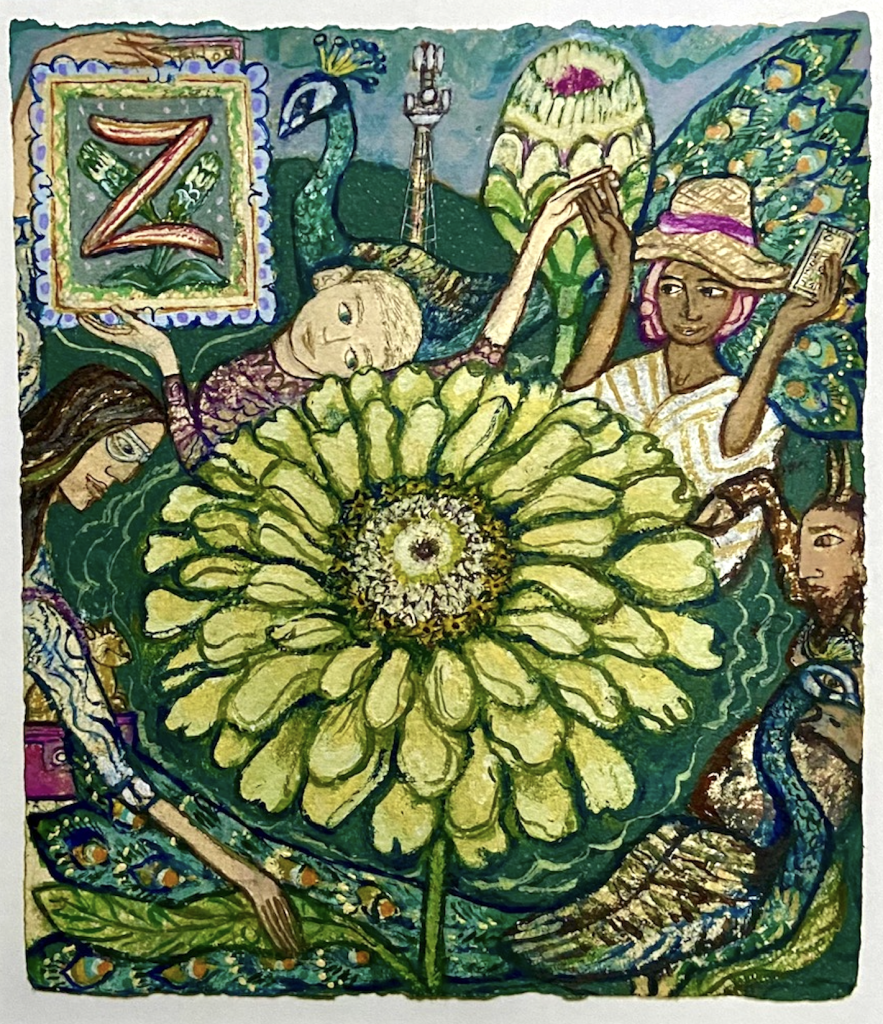
Z is for Zinnia
※
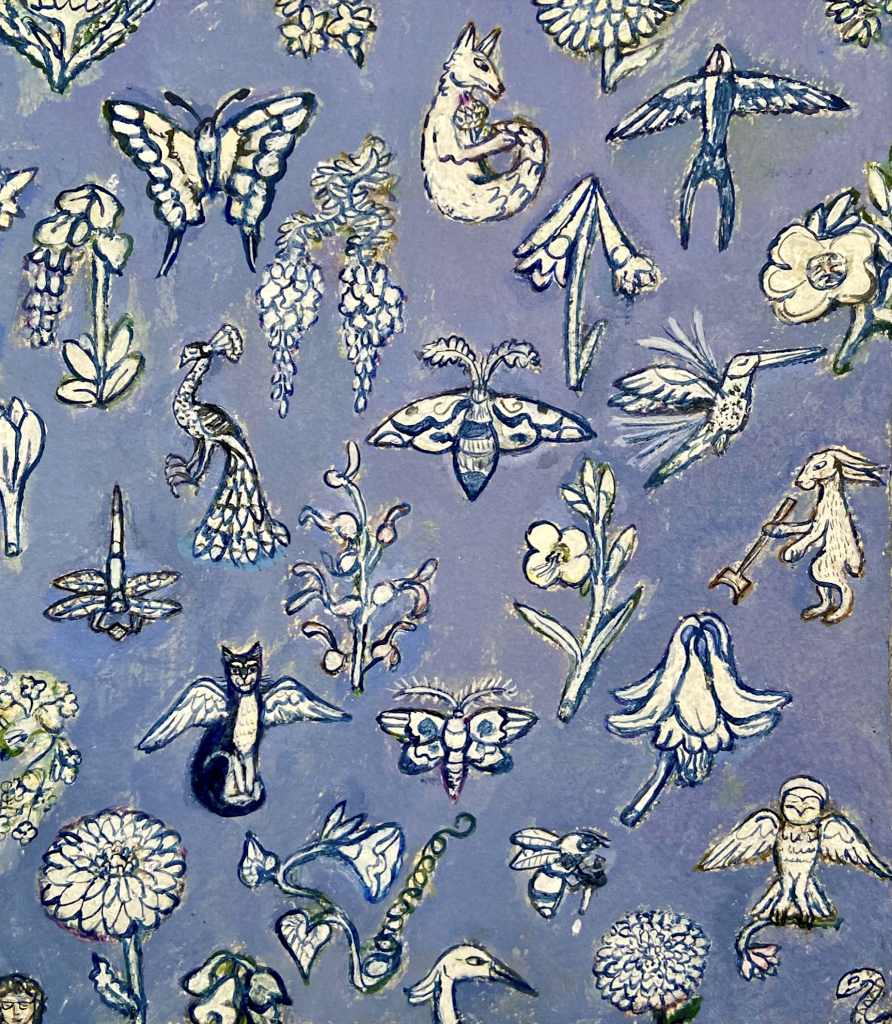
Endpaper for Hollington’s Florilegium
※
David Hollington / The Rowley Gallery


gorgeous and fascination. Good luck!
What a delightful collaboration! Not long to wait now, Clark and David, until the fruition of your labours becomes a complete reality. I don’t paint and it would be quite a stretch for me to be called a gardener, albeit an amateur one or even a half-gardener (my plants are in pots and hanging baskets), but I love God and His creation, so here I am, not feeling excluded and waiting with eager anticipation for the day of publication.